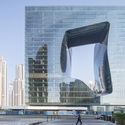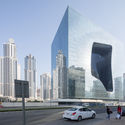One of the main attractions of 2018’s Burning Man Festival was the ORB, designed by Bjarke Ingels, Iacob Lange & Laurent de Carniere. The inflated spherical mirror was created as a conceptual representation of Earth and human expression, leaving no trace after its deflation. The project consumed 30 tons of steel, 1,000 welding and sewing hours, and $300,000 of personal funds to make the ORB come to life.
As part of their mini-film series, creative duo another : have collaborated with music composer Yu Miyashita and released a short video that explores the process of creating the ORB in an otherworldly way.







_8918.jpg?1564659851)
_9105.jpg?1564659862)
_9331.jpg?1564659818)
_9283.jpg?1564659903)
_8623.jpg?1564659967)
















_2655.jpg?1561371788)






_5838.jpg?1559756527)
_6158.jpg?1559756694)
_6015.jpg?1559756499)
_5936.jpg?1559756682)
_6206.jpg?1559756718)
_2655.jpg?1560892327)
_2741.jpg?1560892362)
_2541.jpg?1560892289)
_2605.jpg?1560892300)
_2763.jpg?1560892398)
.jpg?1559207593)
.jpg?1559207947)
.jpg?1559207882)
.jpg?1559207058)
.jpg?1559208195)











_5738.jpg?1556027783)
_5498.jpg?1556027648)
_5957.jpg?1556027812)
_5926.jpg?1556027680)
_7973.jpg?1556027669)